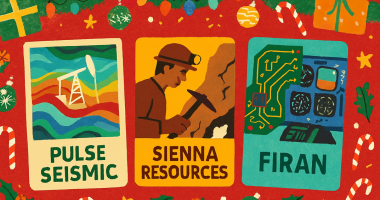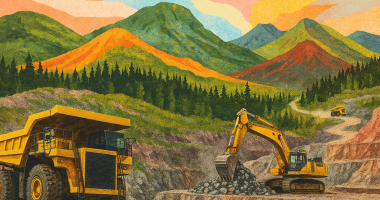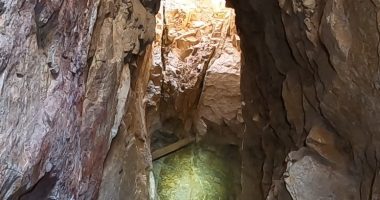Advance United Holdings (CSE:AUHI) is Canadian-based “non-mining” company. It is engaged in the acquisition, exploration, and development of mineral properties. The company’s mineral properties include Doyle Property, Paint Lake Road Project and Buck Lake Property in Ontario.
Advance’s unique strategy includes combining mining portfolios with its digital platform. Here to explain what all of that means in greater detail is Jim Atkinson, the CEO and director of Advance United.
TMH: Jim, it’s a pleasure to have you. Let’s start with the company’s first-of-its-kind digital platform that connects owners of mineral commodities and deposits with developers and producers. What does that mean?
Atkinson: What we like to think of is perhaps being the “Amazon of mining companies.” There are other digital mining companies out there that take a look at all the information, use AI and sort of figure out where to go. What we think would be more useful would be to have a platform where people that have properties can connect with people that want properties and, in that sense, it’s kind of like Amazon. People want to buy something, Amazon knows where it is and sells it to them, and I think that’s kind of our concept.
What we’re in the process of doing right now is twofold. First of all, assembling a list of people that have properties and we have some of that based on our experience and then also trying to talk to various companies that are looking for properties and one of the things that we think of is a large company like IAMGOLD or somebody, they don’t really have the time to look at all the opportunities that come in to them. However, they may say to us, we would like to have a gold property within a hundred kilometres of our existing mine in XYZ place and we can say, well we just happen to have some of those in our database and then kind of try to hook them up that way. I think that’s kind of the concept that we’re working towards.
TMH: You are involved exclusively in the acquisition and advancement of past projects – with no intent to bring them back into production or to mine it yourself. Tell us about that strategy.
Atkinson: We are an exploration company. We’re not a mining company and I think what we are going to try to do or are trying to do is actually, as you said, take a look at old operations, old properties. Maybe there’s somebody that has a lot of information and boxes in their basement that has not been looked at for many years and take it and bring it to the point where it’s eligible for say a 43-101, or even maybe if we’re lucky enough, a pre-feasibility study and then we would then partner that with a company that is putting things into production.
I think it’s a problem sometimes that junior mining companies run into where they get to the point where they have a resource, and they sort of get caught up in the whole idea of “Let’s put it into production.” And exploration companies to my mind are not mining companies, and I think they should keep them separate. So that’s why we call ourselves a non-mining company because we don’t really ever intend to do the mining. We intend to take things to the point where somebody else would be interested in doing the mining and we get some kind of monetizing out of it, an interest, or money or sell it. There’s all kinds of deals on that.
TMH: Time can be an issue with typical mining project ROIs – how does your strategy compare to typical mining projects?
Atkinson: I think you’re right. It does take a long time to put something into production or even to find something and develop it. And I think that’s where, for our shareholders’ value, that’s where we’re trying to circumvent the time issue. When we get to the point where we have something that looks attractive and, say, hopefully our share price has gone up and it’s not bad and that is the time when we basically monetize it. And that’s how our shareholders will get value for the project.
TMH: The company’s mineral properties include Doyle Property, Paint Lake Road Project, and Buck Lake Property. What are the highlights of these projects and what makes them a good fit with your company?
Atkinson: They are all projects that have had some past work and very far past work. The Doyle for instance, was worked up until the early 1990s. The Buck Lake property was worked in the 1980s and that’s the kind of thing we look at just as what highlights, for instance the Doyle property, which is a gold property situated in the batch of one Greenstone belt just a little north of Sault Ste. Marie, that has been compared to Hemlo. And it’s been called a Hemlo lookalike. And I believe that because the guy that has said that is Robert Valliant, who is one of the guys that discovered Hemlo. He sort of knows what he is looking at, and he’s said that many times, and he was the person that actually had the property back in the late 1980s and early ’90s. Unfortunately, he ran into a time in the early ’90s when gold price went to $300, and that’s another point of our strategy. Maybe somebody, some project was explored and was doing very well. But then the price of gold dropped, and they couldn’t get money, so it had to be abandoned. And that’s the case at Doyle.
The case at Buck Lake is a little bit different. Buck Lake is what’s called a VMS. It’s a copper deposit, and it was explored back in the 1980s by Noranda. And they drilled a hole into it and found some massive sulfides that had copper. Unfortunately, they never reported the assays. So again, it was an orphan property that was sitting there for 30 years until we actually came across it and said, this is interesting from a point of view of geology, even though we don’t have any assays, we did some prospecting, we found some copper. Just as a total aside, a joke, one of our persons working on our marketing team is actually a country and western writer. And he wrote a song for us called “Unloved,” and we used it in some of our ads. And so we like the ones that are unloved and we go give them a little more modern love.
TMH: You have signed LOIs on several new properties including Rattlesnake and Landrum in South Carolina; Jumping Josephine in B.C.; and Melba in Ontario – do you have an update on these properties?
Atkinson: Yes, Melba, we actually optioned that property. We did about a million dollars worth of drilling on that property last year. It’s a gold property in the Kirkland Lake area. It was mined back in the 1920s, a small mining operation. The property is kind of unique because it’s an exposure of rock that sits in a big swamp. And so although the area of the rock itself, which is about a couple acres shall we say, has been prospected in the past, and there are four known gold-bearing veins on that to the north and to the south and the swamps has never been explored.
We did some drilling this year to try to just firm up whether the veins were there. They were, we found visible gold in them, whatever, but I think more importantly, what we found is we found in our drilling a totally new kind of gold mineralization that’s never been explored there before. Let’s call them porphyry dykes, that have gold disseminated through them. Now it’s not ore grade, but it’s in the order of 10 to 12 metres wide and it’s anomalous gold over the whole 10 or 12 meters. That’s something that we’ll be exploring in our next program just to try to understand what that means and where it goes. And those things, as I said, have never been explored.
South Carolina is a very, very interesting gold area. The very first gold rush in the United States took place in the Carolinas, and that was before the famous gold rush in California. And you can still pan gold in some of the streams in Carolina. There have been five operating mines in that belt plus one – the Haile Mine – is still operating and they’ve just, in fact, did a nice exploration job and found some more ore.
We think it’s a pretty prospective area to look for gold and has that gold. One of the deposits that we’re looking at there has about 55,000 to 60,000 ounces of gold in a historical resource. Again, it kind of fits our model, this is a historical resource, it’s not 43-101. We can go and take a quick look and say “OK, well, we’re going to have to spend whatever, couple hundred thousand or whatever drilling some holes to confirm the resource and hopefully expand the resource.”
Then we’ll be able to generate something which may be of more interest to somebody else, such as a small mining operation. That’s kind of the model there. The Jumping Josephine in British Columbia, we really haven’t done anything about, it’s a great deposit but right now we just don’t have the wherewithal to deal with it.
TMH: Tell me where Advance United is listed currently …
Atkinson: It’s listed on the OTC in United States, listed on the CSE in Canada, and listed on the Frankfurt Boerse in Germany.
TMH: What’s next for Advance United, and what would you like investors to know about the company?
Atkinson: Well, right now we’re trying to do a financing. We put out a press release at the beginning of July, which was looking for $250,000 of equity and $500,000 of flow to do some further exploration work on our projects and also fund some of the ongoing costs that we have.
For more information on Advance United visit advanceunited.ca.
Join the discussion: Find out what everybody’s saying about this stock on the Advance United Bullboard and check out the rest of Stockhouse’s stock forums and message boards.
This is sponsored content issued on behalf of Advance United, please see the full disclaimer here.



